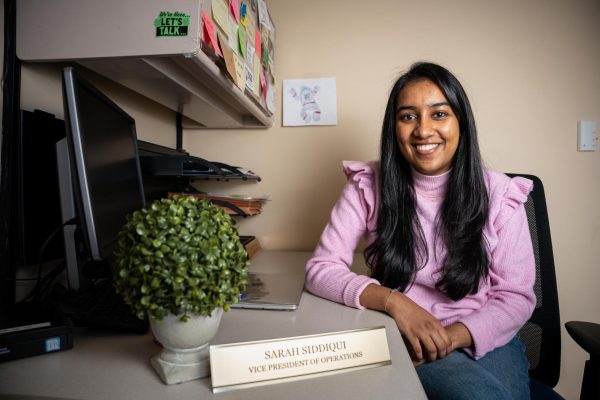No plans for new green roofs at Pitt
February 8, 2012
No new shrubbery will plant its roots on Pitt’s roofs — at least for now.
While… No new shrubbery will plant its roots on Pitt’s roofs — at least for now.
While neighboring Carnegie Mellon University’s greenery spans 41,515 square feet across six buildings, Pitt measures in at 20,100 square feet of green roofing on two buildings. And that square footage will not change with the construction of the new dorm on the corner of University Place and Fifth Avenue.
Daniel Marcinko, a senior administrator in Pitt’s Facilities Management Division, said the University originally had a green roof — a roof with a layer of green vegetation growing on it — planned for the new dorm, but the idea has since been scrapped for “budget purposes.”
Christin Whitco, the senior project manager in planning, design and management for the new dorm, echoed this rationale and said that a green roof would not make “economic sense.”
“The payback on a green roof just isn’t there,” Whitco said about the scrapping of the possible planting.
Student Government Board member Gordon Louderback campaigned on the initiative of bringing more green roofs to Pitt’s campus. He rationalized the University’s decision to cut the roof out of the project.
“It is completely understandable given the budget [the University] is dealing with,” Louderback said. “You can’t take the walls off, but you can take the green roof off … The building can survive without it.”
Louderback said he is still trying to gain ground with his green roof initiative, and he hopes to speak with University personnel this week.
The Board member said that CMU sets a good benchmark for the progress of Pitt’s sustainable projects: Whereas Pitt currently has two green roofs — on the Mascaro Center for Sustainable Innovation (8,200 square feet) and on the Falk School (11,900 square feet) — Carnegie Mellon has six.
“CMU is one of the leaders of sustainability. [It is] a good university to base our work off of,” Louderback said. “[Adding green roofs] can only do good things for the University … We will look a lot better when compared with these other schools.”
Barb Kviz, the environmental coordinator for CMU, said that green roofs cover Hamerschlag Hall, Mellon Institute, Porter Hall, the Posner Center, the Gates Center and Doherty Hall.
Kviz said the first green roof, on Hamerschlag Hall, was intended as a demonstration of stormwater management. The vegetation on the roof helps slow the flow of water from precipitation and direct it to a storage tank for later use in utilities, such as toilets or irrigation systems.
“When you are building a new building, you should consider [stormwater management],” she said. “For a new building, it can be built right into the design.”
Laura Zullo, senior manager of energy initiatives at Pitt, said in an email that the University does not collect or reuse any rainwater from Pitt’s green roofs.
Besides collecting rainwater, Louderback said that green roofs insulate buildings from their tops and reduce the “heat island effect” — a term used to describe how urban areas become hotter than suburban areas because of a lack of reflective surfaces, such as those provided by vegetation.
Whitco said that green roofs are also supposed to be aesthetically pleasing to students and visitors.
“When we can, we try to put green roofs in where they make sense,” she said. “We consider [a green roof] on every project. When it makes sense, we do it. When it doesn’t, we don’t.”
Green roofs consist of a layer of waterproofing fabric underneath a drainage retainer system that holds water after a rainfall so plants’ roots do not dry out. A filter fabric is added between the installed soil and plants to stop them from seeping into the drainage system.
Bruce Gaines, the regional manager for RAM Construction Services, the company that waterproofed the Mascaro Center’s green roof, said that he could not provide a total cost for a green roof. He said that the cost is dependent on many variables, such as the size of the roof, what is under the roof, the soil composition and the plants selected.
“[Green roofs are] good for the environment as long as you maintain the plants … It is a lifetime investment,” Gaines said. “[But] they are expensive, and it’s hard for owners to swallow the cost.”







